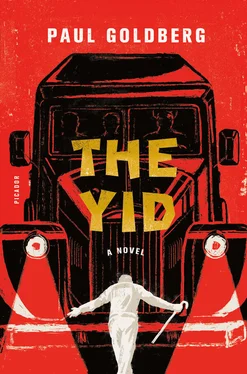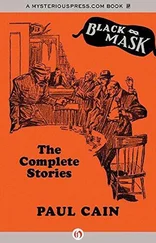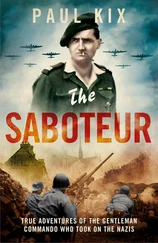For my parents, whose names were in the lists:
Goldberg, Boris Finiasovich — born 1932
Rabinovich, Sofia Aronovna — born 1937

БАР-КОХБА (взмахивая мечом):
Раб, взявшийся за меч, — не раб!
Самуил Галкин , Бар -Кохба
Государственный Еврейский Театр, 1938
BAR-KOKHBA (raising a dagger):
A slave who wields a dagger is not a slave!
Shmuel Halkin, Bar-Kokhba
Moscow State Jewish Theater, 1938
In the early morning of March 1, 1953, when Iosif Stalin collapsed at his dacha, he was preparing to solve Russia’s Jewish Question definitively.
Military units and enthusiastic civilians stood poised to begin a pogrom, and thousands of cattle cars were brought to the major cities to deport the survivors of the purportedly spontaneous outbursts of murder, rape, and looting.
Stalin intended his holocaust to coincide with the biggest purge Russia had seen.
The West would have to choose between standing by and watching these monstrous events or taking the risk of triggering a world war fought with atom and hydrogen bombs.
Stalin’s death was announced on March 5, the day his pogrom was scheduled to begin.
At 2:37 a.m. on Tuesday, February 24, 1953, Narsultan Sadykov’s Black Maria enters the courtyard of 1/4 Chkalov Street.
A Black Maria is a distinctive piece of urban transport, chernyy voron , a vehicle that collects its passengers for reasons not necessarily political. The Russian people gave this ominous carriage a diminutive name: voronok , a little raven, a fledgling.
At night, Moscow is the czardom of black cats and Black Marias. The former dart between snowbanks in search of mice and companionship. The latter emerge from the improbably tall, castle-like gates of Lubyanka, to return laden with enemies of the people.
The arrest of Solomon Shimonovich Levinson, an actor from the defunct State Jewish Theater, is routine. An old, likely decrepit Yid, Levinson lives alone in a communal flat at 1/4 Chkalov Street. Apartment 40. No hand-wringing wife. No hysterical children. No farewells. No one to hand the old man a toothbrush through the bars of a departing Black Maria.
In the parlance of state security, arrests are “operations.” This operation is easier than most: collect some incriminating rubbish, put a seal on the door, help the old man into the truck, and a little before dawn, the Black Maria drives back through Lubyanka’s armored gates.
Lieutenant of State Security Sadykov is slight and pale. His hair is straight and dark red. He is a Tatar, a dweller of the steppes, a descendant of the armies of Genghis Khan, an alumnus of an orphanage in Karaganda. With him are two soldiers, naïve nineteen-year-old boys from the villages of Ukraine, dressed in anemia-green coats, each armed with a sidearm. One of the boys carries a pair of American handcuffs.
* * *
Another night, another knock-and-pick. The function of the green, covered light trucks that fan through Moscow at night is clear to everyone. There is no reason to hide their purpose or to flaunt it. It’s best to approach through the courtyard, turn off the engine and the lights, and coast gently to a halt.
The driver, one of the nineteen-year-olds, skillfully pilots the vehicle through the dark, narrow cavern of an archway built for a horse cart. With the engine off, he surrenders to inertia.
Bracing for a burst of frost, Sadykov and the boys step out of the Black Maria. A thin coat of crisp, pristine snow crunches loudly underfoot. Sadykov looks up at the darkness of the five-story buildings framing the sky above the courtyard. The night is majestic: dry frigid air, bright stars, the moon hanging over the railroad station, pointing toward mysterious destinations.
Whenever possible, Sadykov avoids going through front doors, favoring tradesmen’s entrances. The back door of 1/4 Chkalov Street is made of heavy oak, devilishly resilient wood that has defied a century of sharp kicks and hard slams. Protected by an uncounted number of coats of dark brown paint, it stands impervious to weather and immune to rot. Opening the door, Sadykov and his entourage plunge into darkness.
Since 1/4 Chkalov Street is close to the Kursk Railroad Station, travelers use the building’s stairwell as a nighttime shelter. As they await morning trains, these vagabonds curl up like stray dogs beneath the staircase, their bodies encircling suitcases and burlap sacks. If it’s your lot to sleep beneath those stairs, you have to be cold or drunk enough to tolerate the overpowering smell of urine.
Ignoring the odor and the sound of a man snoring under the stairs, the three soldiers feel their way to the second floor. Sadykov lights a match. A blue number on a white enameled sign identifies apartment forty.
With the match still lit, Sadykov motions to the boys. When duty takes Sadykov and his comrades to large communal flats, the arresting crew has to wake up someone, anyone, to open the door and, only after gaining entry, knock on the door of the person or persons they’ve come to collect for the journey through Lubyanka’s heavy gates. More often than not, the proverbial “knock on the door” is a light kick of a military boot.
Three men standing in cold, stinking darkness, waiting for someone to hear the kick on the door is not an inspiring sight. They might as well be scraping at the door, like cats, except cats returning after a night of carnage and amour are creatures of passion, while nineteen-year-old boys with sidearms are creatures of indifference, especially at 2:55 a.m. on a February night.
On the tenth kick, or perhaps later, the door opens. Sadykov discerns a frail face, an old woman. Blue eyes set deeply behind high cheekbones stare at the three men. These old crones are a curse, especially for those who arrest people for a living.
Whenever a Black Maria or its crew is in sight, a Moscow crone is certain to start mumbling prayers. Sadykov regards prayers as futile, yet he secretly fears them. He has an easier time with hand-wringing middle-aged wives; their hysterics affect him no more than a distant cannonade. (As a product of an orphanage, Sadykov has had no exposure to familial hysterics.) For reasons Sadykov cannot fathom, a prayer threatens, even wounds.
“Does Levinson live here?”
Making the sign of the cross, the old woman disappears into darkness of the hallway. The three men walk in. It’s a long hallway of a five-room apartment, with three doors on the right facing Chkalov Street, and two on the left, facing the courtyard.
Sadykov lights another match.
He hears a door creak. It has to be the old woman. She is watching. Her kind always watches. No, righteous she can’t be. She may be the resident snitch, and now she lurks behind the door, pretending to drag God into this purely earthbound affair while in fact savoring the results of her anonymous letter to the authorities.
Sadykov doesn’t know which door is hers, yet hers is the door he wants to avoid.
According to instructions, Levinson’s room overlooks the courtyard. That leaves a choice of two doors.
During operations, neighbors sit behind closed doors, like trapped rodents. And in the morning, they feign surprise and indignation. Just to think of it, Levinson, an enemy! A loner. Always grumbling. Had no use for children. Hated cats. Fought in the partisan bands along the Trans-Siberian Railroad during the Civil War. Would have thought he was one of us, a simple Soviet man, but with Yids nothing is simple. Treachery is their currency of choice. And if he really is a traitor, fuck him, let him be shot!
Читать дальше













